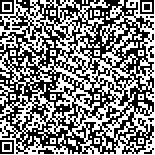| 摘要: |
| [摘要] 目的 观察硫酸镁治疗早期重症手足口病(HFMD)患儿的临床疗效。方法 选择该院早期重症HFMD患儿92例,根据治疗方式不同分为对照组(31例)和观察组(61例),对照组给予常规对症治疗,观察组在对照组的治疗基础上予硫酸镁治疗,观察两组的临床疗效及治疗前后的实验室指标变化情况。结果 观察组治愈40例,有效18例,无效3例。对照组治愈14例,有效11例,无效6例。观察组疗效优于对照组(P<0.05)。在治疗后,两组患儿的血清锌、钙离子浓度较治疗前显著提高(P<0.05),且观察组镁离子浓度显著高于对照组(P<0.05)。在治疗后,观察组血清神经元特异性烯醇化酶(NSE)、去甲肾上腺素(NE)、多巴胺(DA)、肌酸激酶同工酶(CK-MB)、干扰素-γ(IFN-γ)水平较治疗前显著下降(P<0.05),血清胱抑素C(CysC)较治疗前显著上升(P<0.05);对照组仅NSE水平较治疗前显著降低,CysC水平较治疗前显著升高(P<0.05)。治疗后,NSE、CysC、NE、DA、CK-MB及IFN-γ水平在两组间比较差异有统计学意义(P<0.05)。观察组的神经系统受累持续时间和白细胞、血糖恢复正常所用时间显著短于对照组(P<0.05)。观察组并发症总发生率(4.92%)低于对照组(19.35%),但差异无统计意义(P>0.05)。结论 硫酸镁可有效提高早期重症HFMD患儿治疗疗效,改善患儿神经系统受累症状和激素治疗副作用,有效减少脑膜炎、肺水肿等并发症,药物安全性良好。 |
| 关键词: 早期重症手足口病 硫酸镁 神经系统受累 激素治疗副作用 |
| DOI:10.3969/j.issn.1674-3806.2020.02.07 |
| 分类号:R 725.1 |
| 基金项目:河南省医学科技攻关项目(编号:201702326) |
|
| Clinical efficacy of magnesium sulfate in treatment of early severe hand, foot and mouth disease in children |
|
CHEN Fang, SONG Chun-lan, GU Xue, et al.
|
|
Intensive Care Unit, Children′s Hospital Affiliated to Zhengzhou University, Henan Children′s Hospital, Zhengzhou Children′s Hospital, Henan 450000, China
|
| Abstract: |
| [Abstract] Objective To observe the clinical efficacy of magnesium sulfate in treatment of early severe hand, foot and mouth disease(HFMD) in children. Methods Ninety-two children with early severe HFMD in our hospital were selected and were divided into control group(n=31) and observation group(n=61) according to different treatment methods. The control group was given routine symptomatic treatment while the observation group received the same treatment as the control group plus magnesium sulfate. The clinical efficacy and laboratory indicators were observed in the two groups before and after treatment. Results In the observation group, 40 cases were cured, 18 cases effective and 3 cases ineffective. In the control group, 14 cases were cured, 11 cases effective and 6 cases ineffective. The clinical efficacy of the observation group was better than that of the control group(P<0.05). After treatment, the concentrations of serum zinc and calcium ions in the two groups were significantly increased compared with those before treatment(P<0.05), and the concentration of magnesium ion in the observation group was significantly higher than that in the control group(P<0.05). After treatment, the levels of serum neuron-specific enolase(NSE), norepinephrine(NE), dopamine(DA), creatine kinase isoenzyme(CK-MB) and interferon-γ(IFN-γ) in the observation group were significantly decreased compared with those before treatment(P<0.05) while the level of serum cystatin C(CysC) was significantly increased compared with that before treatment(P<0.05). In the control group, only the level of NSE was significantly decreased compared with that before treatment and the level of CysC was significantly increased compared with that before treatment(P<0.05). After treatment, there were significant differences in the levels of NSE, CysC, NE, DA, CK-MB and IFN-γ between the two groups(P<0.05). The duration of neurological involvement and the time for leukocytes and blood glucose to return to normal in the observation group was significantly shorter than that in the control group(P<0.05). The total rate of complications in the observation group was lower than that in the control group(4.92% vs 19.35%), but there was no significant difference between the two groups(P>0.05). Conclusion Magnesium sulfate can effectively improve the clinical efficacy of early severe HFMD in children, improve the symptoms of neurological involvement and side effects of hormone therapy, and is safe and effectively reduces the complications such as meningitis and pulmonary edema. |
| Key words: Early severe hand, foot and mouth disease Magnesium sulfate Neurological involvement Side effects of hormone therapy |

